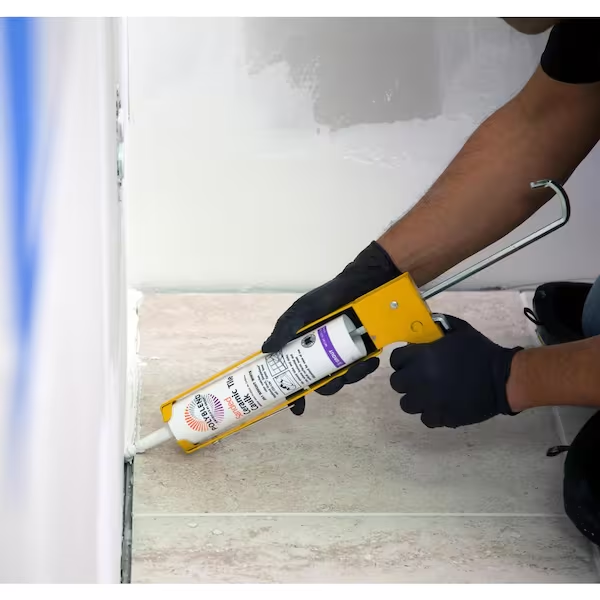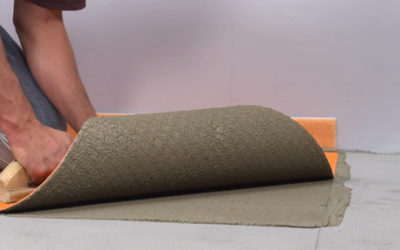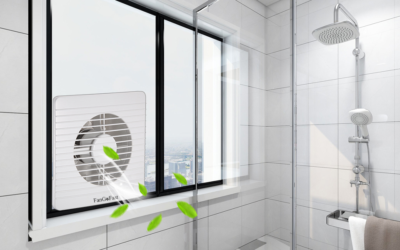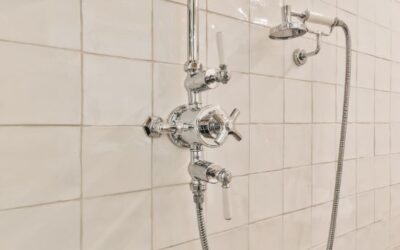Have you ever wondered how shower seats affect a bathroom design? Have you looked into the different types of shower seats available, tested them yourself, and then wondered if they were suitable for your bathroom? Or you know you need a shower seat but are unsure where it goes? Well, we have all been there!
Installing a shower seat is one of the best design options that you should consider when remodeling or building your bathroom. Choosing the correct type of shower seat not only improves accessibility but, depending on the type of seat you choose, can give your bathroom a completely different look and feel. Sounds impressive, right?
This article will showcase some of the various types of shower seats available and discuss installation guidelines. Also, it will help guide you in choosing the proper Shower bench for your bathroom. So let’s get busy.
What are the Benefits of a Shower Seat in a Bathroom?
A shower seat is one of the most widely used bathroom accessories because of its many benefits. The ultimate purpose of installing a shower seat is to improve accessibility, especially for the elderly and physically disabled. These people are more prone to slipping and falling in a bathroom. Therefore, a shower bench makes taking a shower a pleasant and safe experience for them. Plus, a person who uses a wheelchair can simply move from the wheelchair to the seat to take a shower.
In addition to sitting, a shower bench provides a footrest for leg shaving and extra space for toiletries.
But that is not all. From a design point of view, you do not need to be concerned about ruining the appearance of your bathroom because shower seats can be tailored to match your accessories and may even improve its beauty.
What are the Different Types of Shower Seats?
Shower seats have come a long way over the last few years. Today’s seats are much different than the traditional plastic seats we have all seen in bathrooms.
There are numerous types of shower seats on the market. Knowing the features of each helps you decide which one will satisfy your needs.
1. Built-In Shower Seat
The first type we want to introduce is the built-in shower bench. This type of shower bench is a part of the shower and it should be built during the shower construction. Therefore, these seats are usually made of the same material as the shower. Typically they are used in walk-in or roll-in showers. (see Figure 1)
Figure 1
These seats have a few problems that may make them less favorable. To name a few:
- They are not very comfortable because they are not compatible with the ergonomics of the human body
- They are more expensive than other types of shower seats
- The possibility of water leakage into the structure increases because of the increased number of corners in the shower
- A built-in seat typically takes up more room than most other types
- You cannot remove or change them easily (see Figure 2).
Figure 2
2. Floating Shower Seat
If you want more space underneath the seat, you can use a floating seat. It can be built from various materials, such as waterproof wood, a single slab of stone, or tile. Depending on your bathroom space, you can install a corner or a rectangular floating seat. The open space underneath makes this type of seat a better option for wheelchair users.
When you choose a floating seat, you have to consider the stability of the seat. Therefore, consulting an expert in this area is highly recommended.
A standard shower bench may support 200 to 500 pounds, depending on the model.
Figure 3
3. Folding Shower Seat
The folding shower seat is a kind of floating seat that attaches to the wall, and you can fold it when not in use (see Figure 4). These shower seats are more functional than the others. They take up less space and are suitable for small shower areas.
Like the floating seats, folding seats require careful and knowledgeable professional installation. Since they do not have legs for support, it is important to make sure they are installed properly.
Figure 4
Folding shower seats come in a variety of materials, including metal, wood, and plastic. Additionally, they can be found in stylish designs, such as a folding seat with legs. (see Figure 5).
Figure 5
4. Stand-Alone Shower Seat
A stand-alone shower seat, also called a free-stand, or standard shower seat, is not attached to the shower. You can move this seat around in your shower and place it where you want. They are made from different materials, including wood, plastic, or metal, and come in stylish shapes and designs. (see Figure 6). Also, you can choose stand-alone seats with wheels that make moving them easier.
The downside to this type of seat is that they are not very safe, and we do not recommend them. They can easily move on the wet shower floor, causing accidents, especially for elderly and physically disabled people.
Figure 6
5. In-Tub Shower Seat
The shower seats we mentioned earlier are suitable for walk-in or roll-in showers. But what if your shower area includes a bathtub? Well, there is a solution for tubs.
In-tub seats are designed for this situation. These seats can be permanent, which means they are built as a part of the tub deck, or removable, meaning they can be placed on the tub, and easily moved.
Figure 7
What Type of Shower Seats Are Allowed by the Americans with Disabilities Act (ADA)?
Shower seats should comply with section 610 of the ADA Standards. Surprisingly, if you want to meet the ADA’s requirements, you are only allowed to use these two types of shower benches : an in-tub shower seat or a folding shower seat. Also, the seat weight capacity should be at least 250 pounds.
As per the ADA, an accessible compliant shower seat should meet the following dimensions:
- 17 to 19 inches in height
- A minimum of 14 inches in width
- 15 to 16 inches in depth (at least 15 inches for a permanent in-tub seat) (see Figure 8).
Figure 8
A typical rectangular folding seat meets these requirements. But corner shower seats usually are not ADA compliant, and we do not recommend using them in a shower where accessibility is the priority.
Instead of corner seats, you can use L-shaped seats that are 24 inches in length and a minimum of 24 inches wide.
Remember, when installing a standard shower benches with the above mentioned dimensions in a roll-in shower, you need to have an average of 36 x 36 inches of interior space (see Figure 10).
Where Should You Install the Shower Seat According to the ADA?
Imagine that you designed a great shower according to the ADA, chose a great standard shower seat, and now it is time to install it. But what if you install it in the wrong place? That could make using the seat difficult or impossible.
For this reason, in this part of the article, we discuss shower benches placement in two sections: first, for the in-tub shower seat, and second for the folding shower seat.
In-Tub Shower Seat
When using a movable in-tub seat, you need to make sure that the seat is secure to the tub according to the seat installation instructions. You can place it where you feel comfortable; the ADA does not have any specific rules for the placement of an in-tub seat. A permanent in-tub seat should be at the head end of the tub and extend from the back wall to or beyond the tub’s outside edge (see Figure 9).
Figure 9
Folding Shower Seat
You might use a folding shower seat in a transfer shower, a roll-in shower, or an alternate roll-in shower (see Figure 9). For installing a seat in each, you should adhere to the ADA requirements.
You should place the seat on the side wall for a transfer-type and roll-in shower, but it should be on the front wall in an alternate roll-in shower. The seat could be rectangular or L- shaped. In any case, the seat should have a maximum of three inches distance from the entry.
Figure 10: From left to right: Transfer-type shower, Roll-in shower, Alternate roll-in shower
When using a rectangular seat, you should use the following dimensions:
- 2 ½ inches maximum distance between the rear edge of the seat and the wall,
- 15 to 16 inches distance between the front edge of the seat and the wall,
- 1 ½ inch maximum distance between the side edge of the seat and the adjacent wall (see Figure 11).
Figure 11
But, if it is an L-shaped seat, use the following dimensions:
- 2 ½ inches maximum distance between the rear edge of the seat and the wall,
- 15 to 16 inches distance between the front edge of the seat and the wall,
- 1 ½ inch maximum distance between the rear edge of the L portion of the seat and the wall,
- 14 to 15 inches distance between the front edge of the L portion of the seat and the wall
- 22 to 23 inches distance between the end of the L and the main seat wall (see Figure 12).
Figure 12
How Much Does it Cost To Add a Shower Seat?
Let’s be honest, the cost of installing a shower seat is a determining factor for most of us when deciding to install one. The cost depends on the type of seat, size, materials, and if you want to DIY or leave the installation to professionals.
Depending on the size and material, installing a built-in shower seat often costs between $300 and $800. The average cost of wall-mounted fold-down shower seats ranges from $120 to $1000.
Choose the Right Shower Seat Type…
By now, you have learned how effective and beneficial shower seats can be. A shower seat may improve your bathroom experience, but only if you choose the right type.
As you can see, there are many types of seats available, making it hard to choose. Therefore, you should decide which shower seat type best suits your needs and lifestyle, fits into your budget, and works with your shower’s size.
It can be challenging if you have a smaller budget or a complicated bathroom design. If you want to add a built-in shower seat or your bathroom is too small to accommodate one, some construction work may be necessary. This is when you would need professional help. Matrix Company Solutions Corp. is a certified 203(k) contractor in the Philadelphia area that can help renovate and make your bathroom ADA compliant. We will design an ADA-compliant bathroom while factoring in any accessibility needs you have, including installing a standard shower seat. Do not hesitate to contact us via our FREE Consultation Service link.










in a 6 foot by 3 foot new shower, does the folding wall seat go closer to the shower head or at the opposite side of the shower?
Thanks for your question about shower seat placement in a 6′ x 3′ shower! In most cases, the best location for a folding shower seat is on the wall opposite the showerhead. Here’s why:
Accessibility: Placing the seat opposite the showerhead allows for easier entry and exit from the shower without the water spray directly facing you.
Maneuvering Space: This positioning frees up floor space near the showerhead for maneuvering and washing. It’s especially important in a smaller shower like a 6′ x 3′.
Safety: Having the seat away from the direct water flow minimizes the risk of slipping on a wet seat.
However, there can be exceptions depending on your specific shower layout:
Grab Bars: If you have grab bars installed near the showerhead for additional support, positioning the seat closer to the showerhead might be more convenient for transferring or standing.
Shower Niche: If you have a built-in shower niche for toiletries near the opposite wall, placing the seat closer to the showerhead might make sense to maximize the niche’s usability.
Ultimately, the best way to determine the ideal placement is to consider your individual needs and preferences. Here at MatrixGC.com, we recommend consulting with a professional bathroom contractor who can assess your shower space and recommend the most ergonomic and safe seat location for your situation. They can also ensure proper installation that meets safety standards and building codes.
We hope this helps! Feel free to ask if you have any other questions.